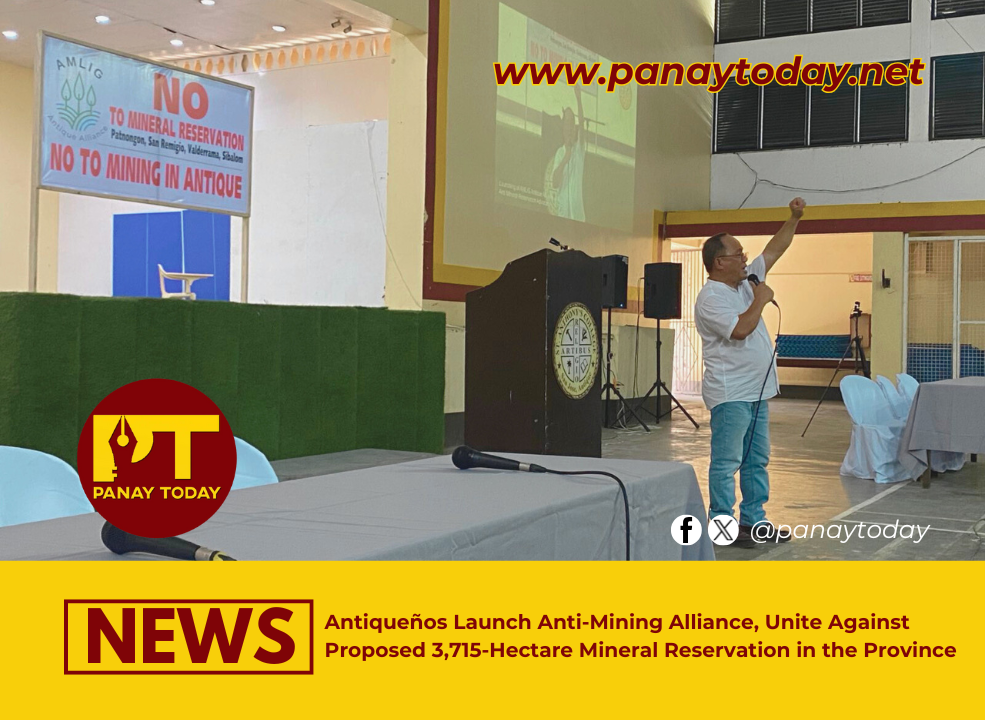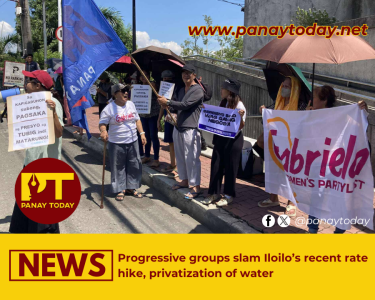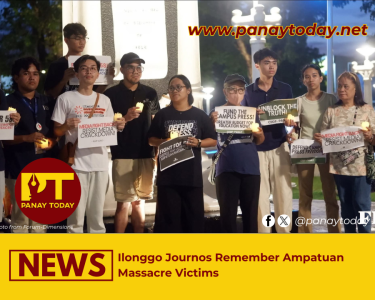By Juls EP
San Jose De Buenavista – In a united effort to protect their land, hundreds of Antiqueños come together for the launching of AMLIG Antique Alliance, an anti-mining coalition, on Tuesday, February 11, 2025. This move came after reports that the Mines and Geosciences Bureau (MGB) of the Department of Environment and Natural Resources (DENR) has proposed a mineral reservation covering approximately 3,715 hectares across more than 16 barangays in the upland areas of Patnongon, San Remigio, Valderrama, and Sibalom in Antique.

The area is known to contain significant deposits of copper, gold, chromite, and silver. While the establishment of a mineral reservation does not immediately authorize mining, the group emphasized that it lays the foundation for future mining operations by designating the land for extractive purposes.
“During the public hearing in San Remegio, the MGB first presented the concept of the mineral reservation. Then, they presented mining operations – the benefits, whatever, and how mining be sustainable,” said Atty. Rolly Pedriña, board member of AMLIG Antique Alliance. “It became clear to us that once the barangays in question are declared as mineral reserves, mining operations will inevitably follow,” he added.
Impact on Biodiversity, Public Health, and Livelihood
The proposal has raised significant concerns among environmental and civil society groups, academics, local communities, and church groups who warn that mining could threaten critical resources and biodiversity.
“Mining, definitely, will affect biodiversity,” said Ruth Martinez of MENRO San Remegio. She pointed out the vital role of the Central Panay Mountain Range in connecting the Sibalom Natural Park to the Northwest Panay Peninsula Natural Park. “Our forests and watersheds provide clean water and food security. They are also home to many threatened and endemic species that can only be found here in Panay and Negros,” she added. “Mining destroys habitats, and when habitats disappear, so does the biodiversity that depends on them,” she stressed.
The group also warned that if the proposed mineral reserve is approved, it could pave the way for mining operations that would damage water sources crucial for local agriculture and public health.
“Watersheds provide essential water for agriculture, households, commerce, and industry. The Sibalom River Watershed, in particular, supplies water for the communities and farmlands of Sibalom, Belison, San Jose, Valderrama, and Patnongon,” said Regie Anne Placido from Haribon Foundation. “Mining in this area would harm biodiversity and severely impact the watershed,” she warned.
Escalation of Calamities
The proposed mining areas are classified by the MGB as high-risk zones prone to landslides and flooding.
“These areas in the province have been vulnerable to typhoons, such as Paeng in 2022 and Frank in 2008, even before any mining activity began,” the group said. They warned that, if mining starts, land leveling and the disruption of natural landscapes could significantly worsen disaster risks, increasing soil erosion, destabilizing slopes, and damaging natural drainage systems.
“Almost all of Antique, particularly the upland areas, is prone to landslides and flash floods due to its proximity to the sea,” said Engineer Alex Crespo of the MDRRMO San Jose. “During Typhoon Frank, we saw severe flooding in the Sibalom, San Remegio, and San Jose areas. Mining would only exacerbate these risks,” he added. Crespo further explained that mining would destroy the environment, which he believes is the best safeguard against natural disasters.
Validity of Public Hearings and Threat of Militarization of Communities
In their position paper, the group expressed doubts about the validity and inclusiveness of the MGB’s public hearings.
“Instead of fostering a transparent dialogue, the hearing appeared to be a promotional campaign, focusing solely on the potential benefits of mining while failing to present its environmental, social, and economic risks,” said the group. They also criticized the exclusion of communities from lower areas, which are likely to be directly affected by mining activities.
Moreover, the group expressed alarm over the displacement and militarization of communities in mining areas across the country, calling it “deeply troubling.” They pointed out that, according to Global Witness reports, the Philippines remains the most dangerous country in Asia for environmental defenders, with mining operations often associated with violence.
“These findings underscore the urgent need for stronger regulations and oversight to protect communities from the social and economic injustices tied to mining operations. The displacement, exploitation, and intimidation experienced by affected populations demand immediate and systemic solutions,” said the group.
Amid these concerns, the AMLIG Antique Alliance is calling on authorities to reconsider the proposed mineral reservation and prioritize the protection of Antique’s natural resources. The group also encourages other organizations and communities to join them in defending the environment./PT





